The Australian Government recently launched a comprehensive Employer Toolkit to help employers hire people with disability and build their organisation’s disability confidence and competence.
The Employer Toolkit is an online resource to guide employers through the entire process of employing people with disability, using simple, straightforward videos, downloadable resources and highlighting real-life case studies.
Assistant Minister for Social Services, Housing and Disability Services, Sarah Henderson said one in five Australians live with disability. By making hiring processes more inclusive, employers can access a huge, untapped pool of talent.
“The Employer Toolkit will empower employers to give the one million Australians with disability looking for work, the same opportunity as everyone else – to demonstrate that they are capable, reliable and above all, employable,” Ms Henderson said.
The Employer Toolkit has been created as part of the Employ their Ability campaign which aims to highlight the benefits of employing people with disability and raise awareness of the Australian Government supports available to assist large organisations.
Ms Henderson also announced the Employer Toolkit would support new work targeting small and medium-sized enterprises. Following research findings in the Making it Easier for Small Business to employ people with disability report, half of the businesses surveyed were open to employing a person with a disability, but lack resources specific for small businesses.
Ms Henderson said the Employer Toolkit would encourage more employers from organisations of all sizes to hire people with disability.
“These resources are specifically designed to be user-friendly so time-poor, corporate professionals can quickly access and absorb the practical information to assist them navigate disability employment,” Ms Henderson said.
“Our goal is to create awareness and let all employers know that support is available. The Employer Toolkit is there to help.”
The Employer Toolkit covers a range of topics relating to disability employment, including creating inclusive policies, finding and interviewing jobseekers with disability, and making adjustments in the workplace.
“Research shows the biggest barriers to hiring people with disability are concerns about integration and a lack of awareness and understanding. The Employer Toolkit takes hirers through every step of the process, providing the support and information they need to get started.” Ms Henderson said.
The Employer Toolkit is one of many Australian Government initiatives to help support disability employment. Disability Employment Services (DES) has supported more than 808,000 jobseekers with disability in their search to find and keep a job. As of December 2018, there are around 213,000 people with disability participating in DES.
The Employer Toolkit is available online through JobAccess, the Australian Government’s national hub for disability employment information and advice.
Get started now at: www.jobaccess.gov.au/employer-toolkit






















